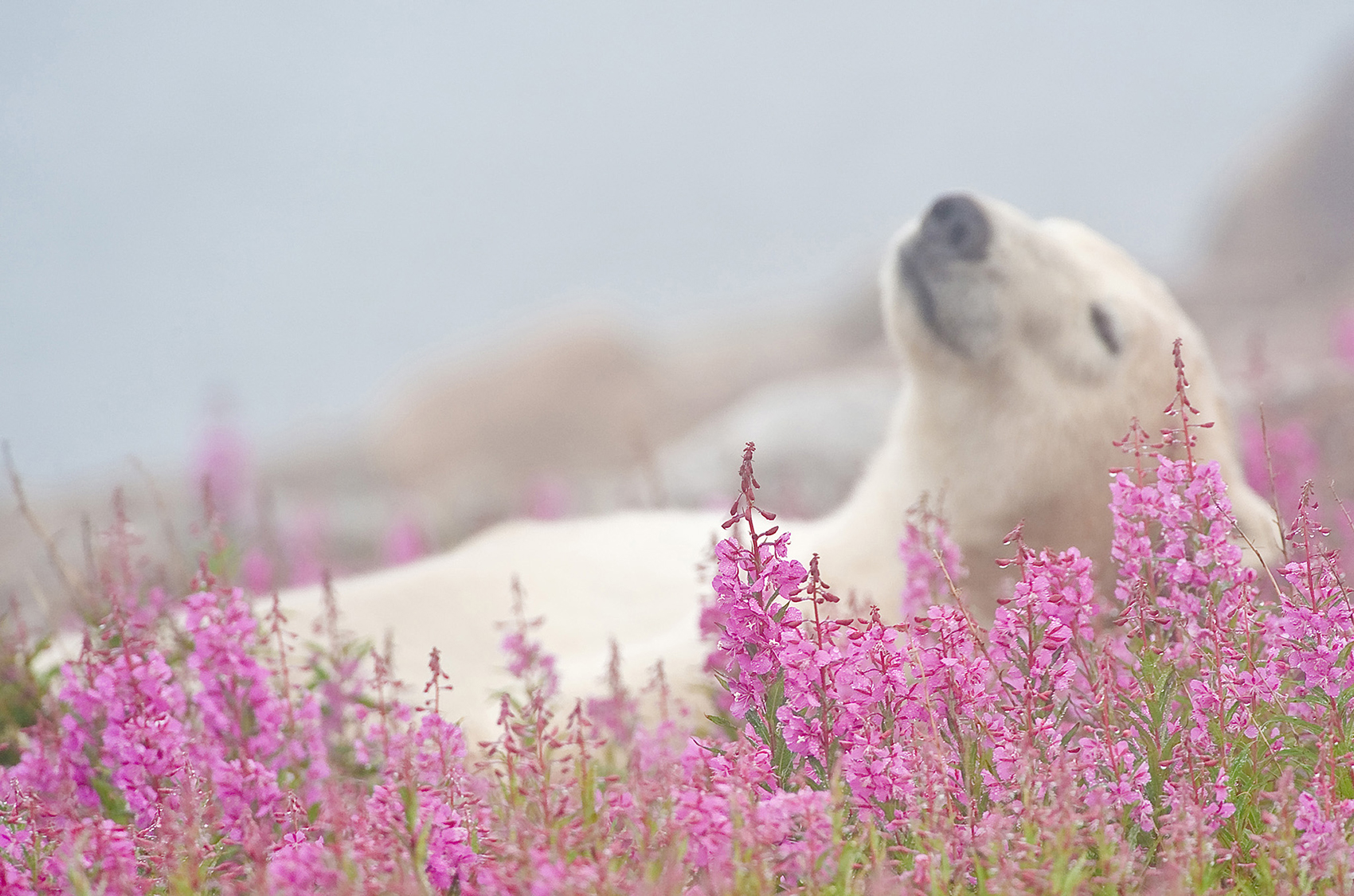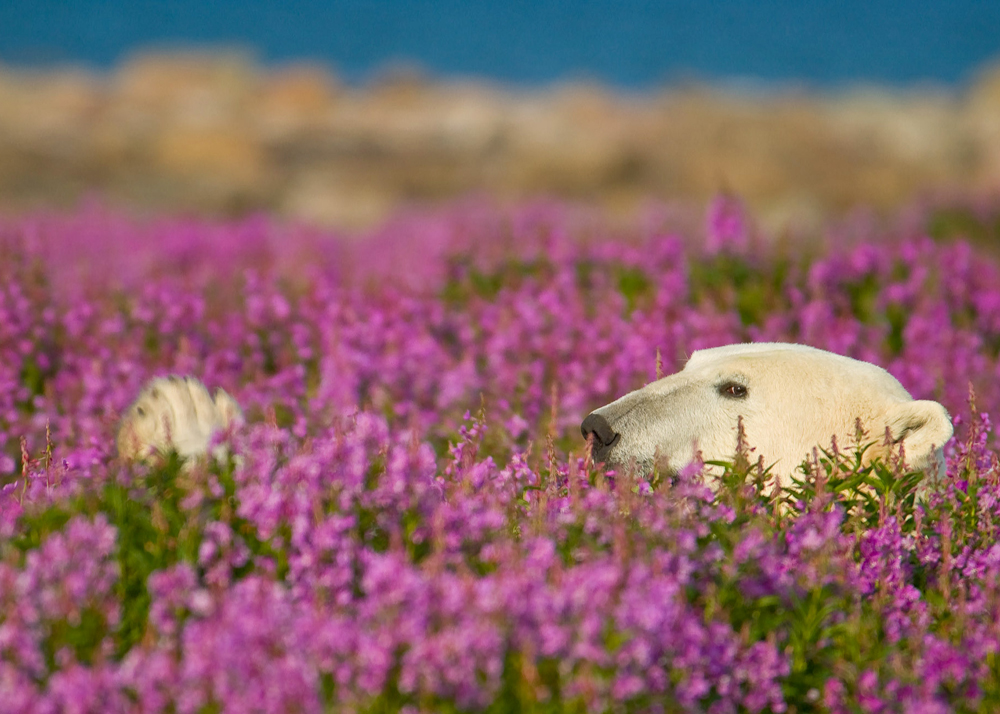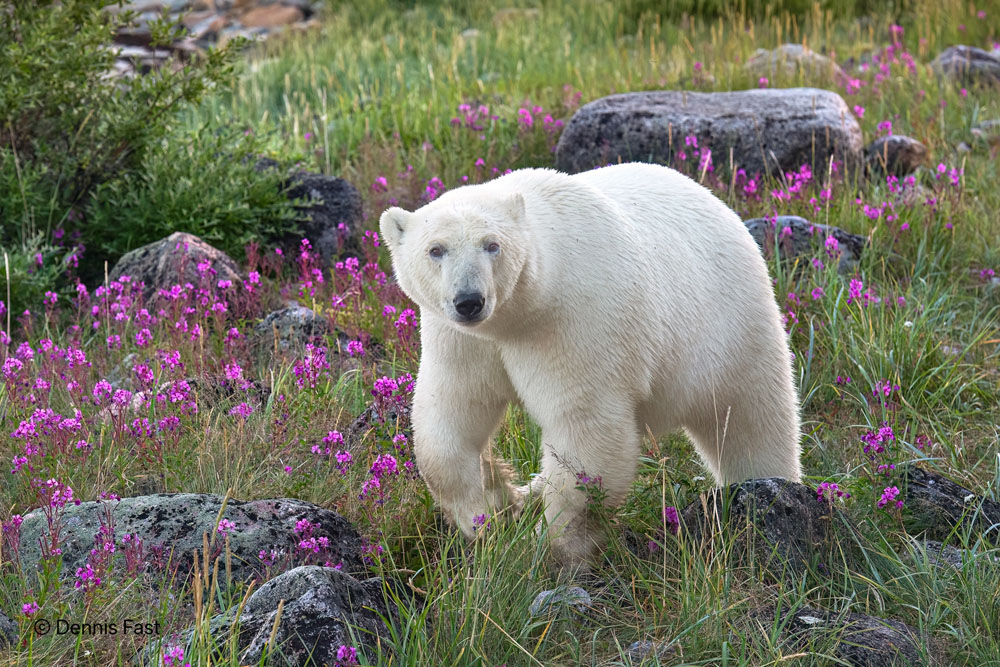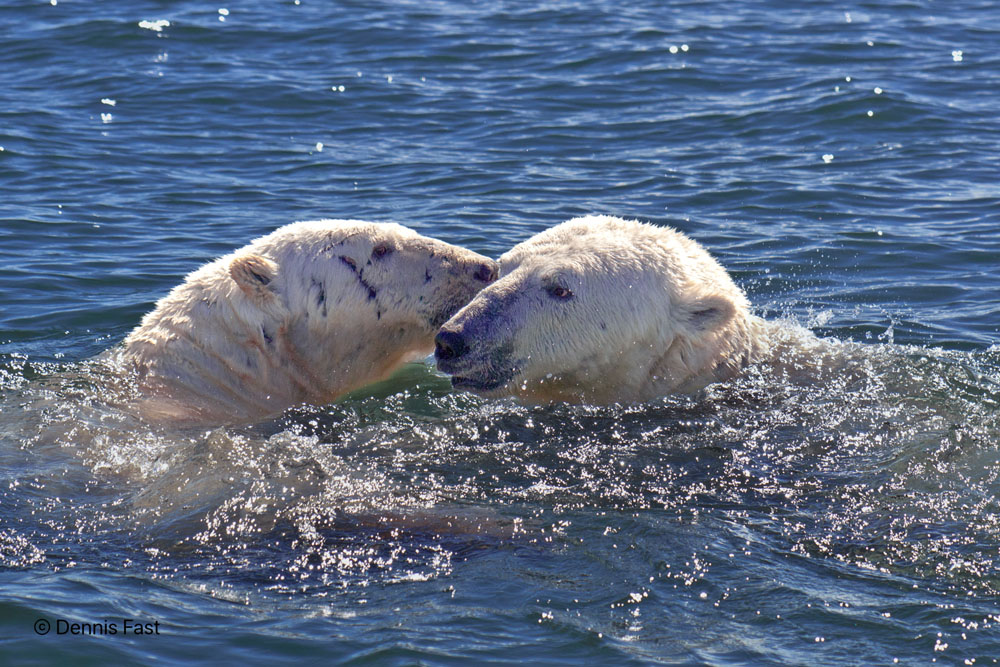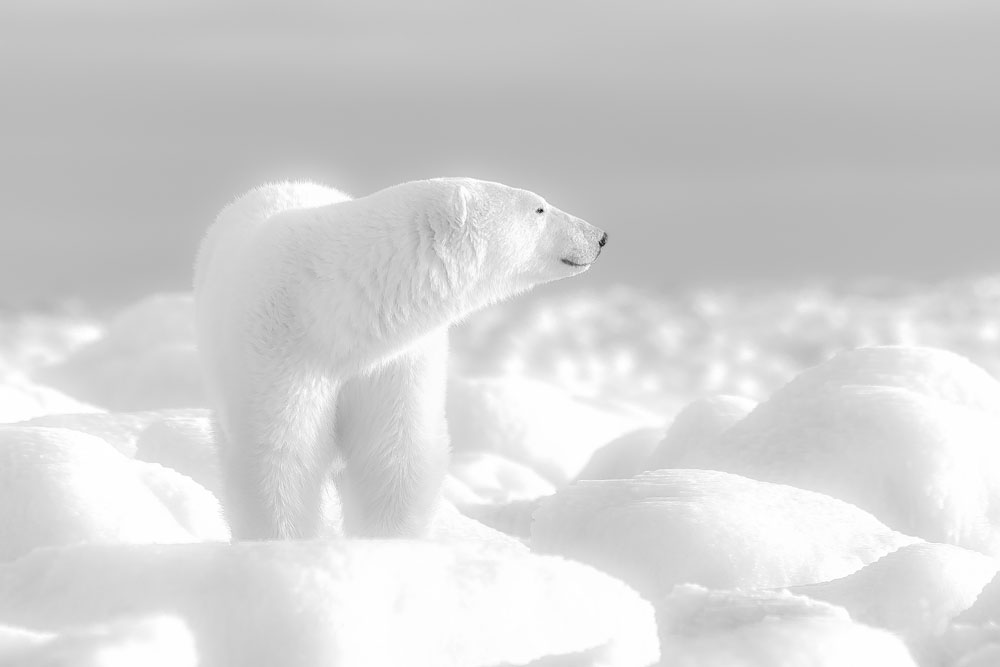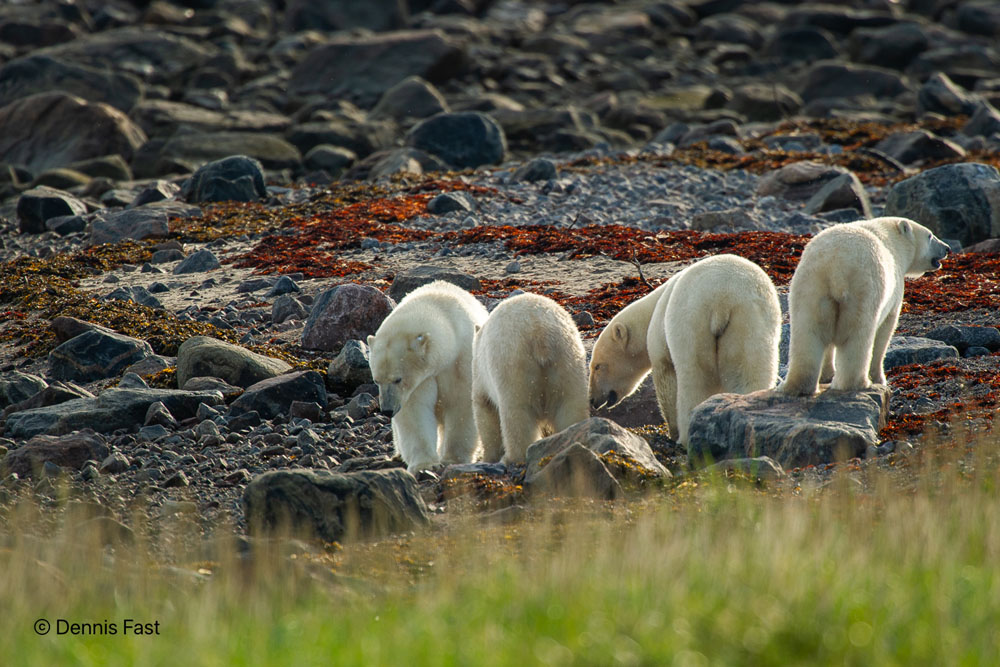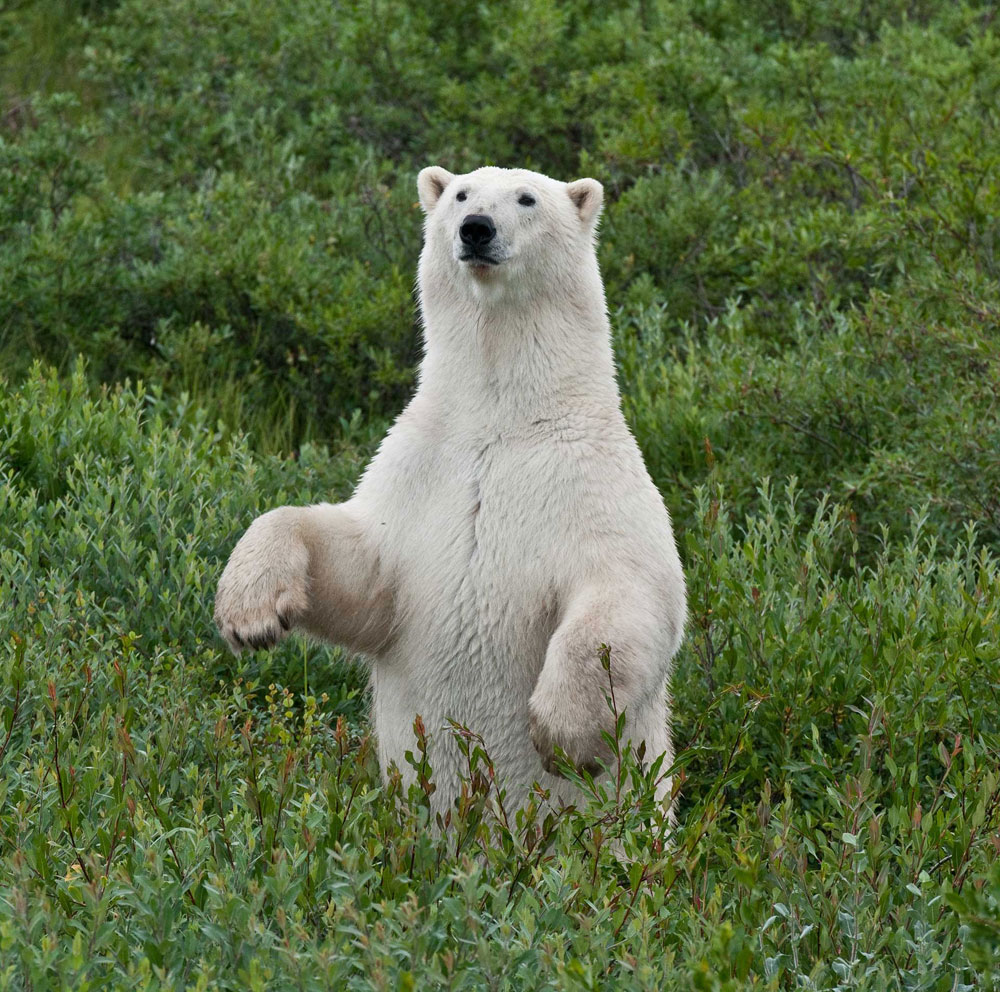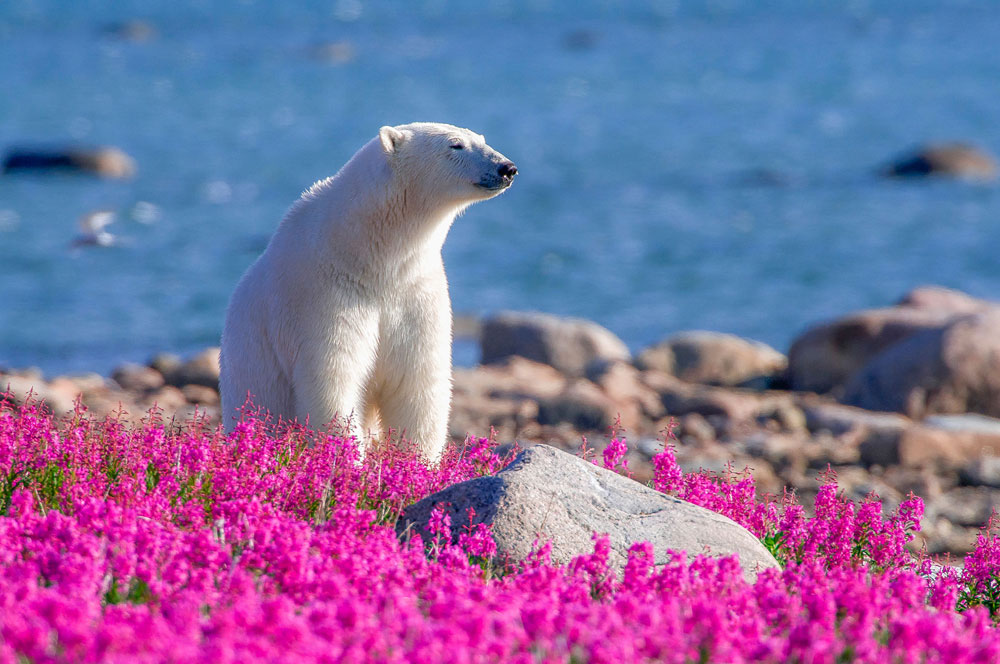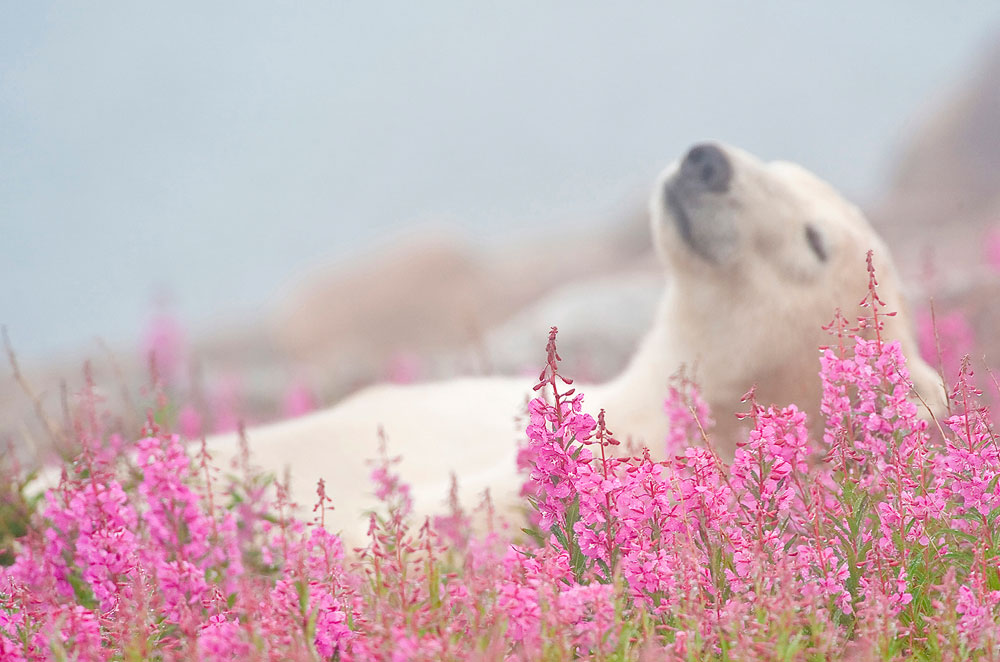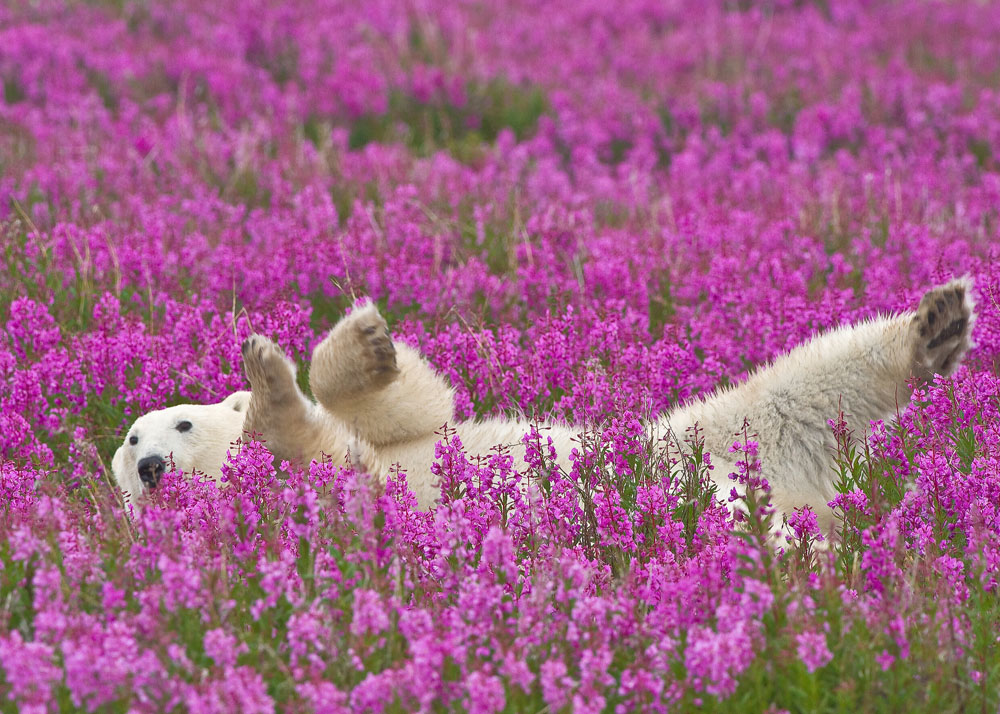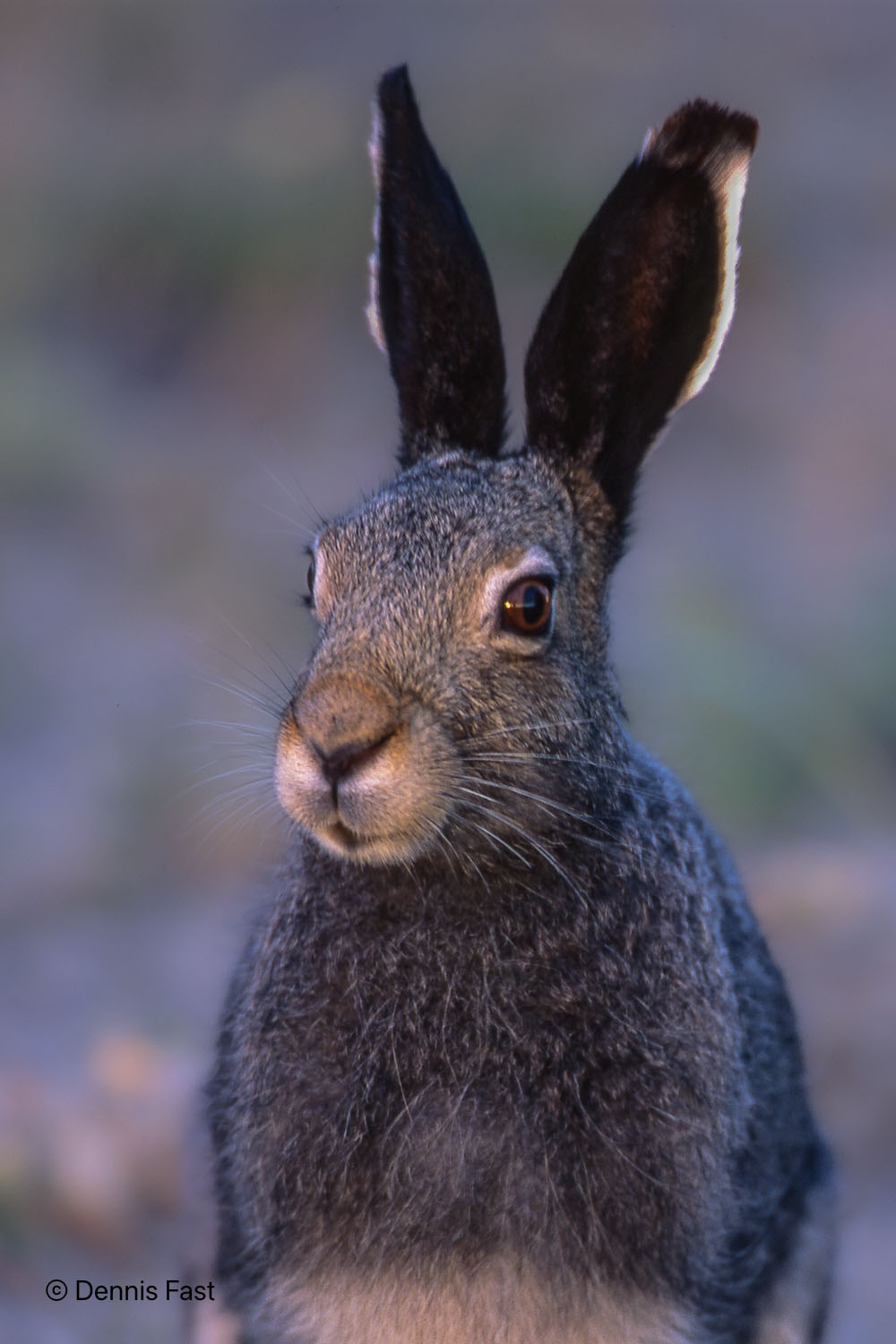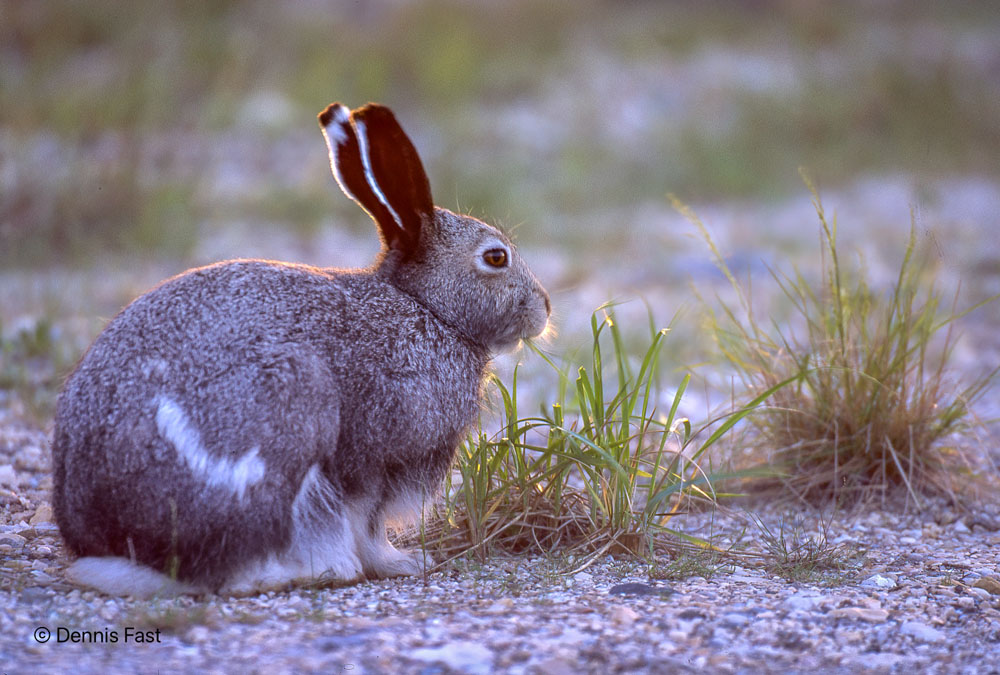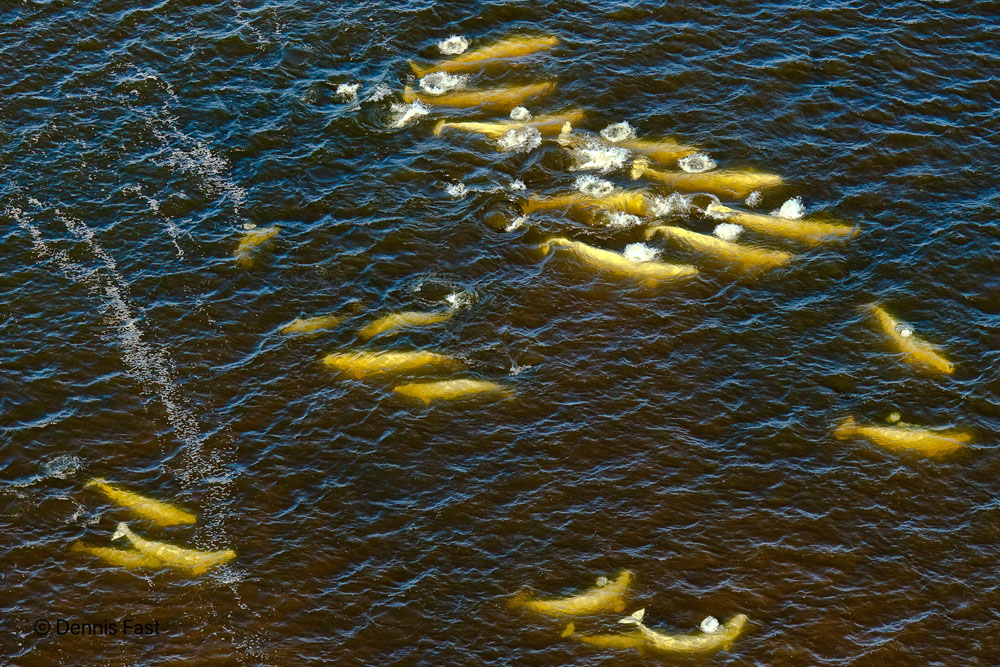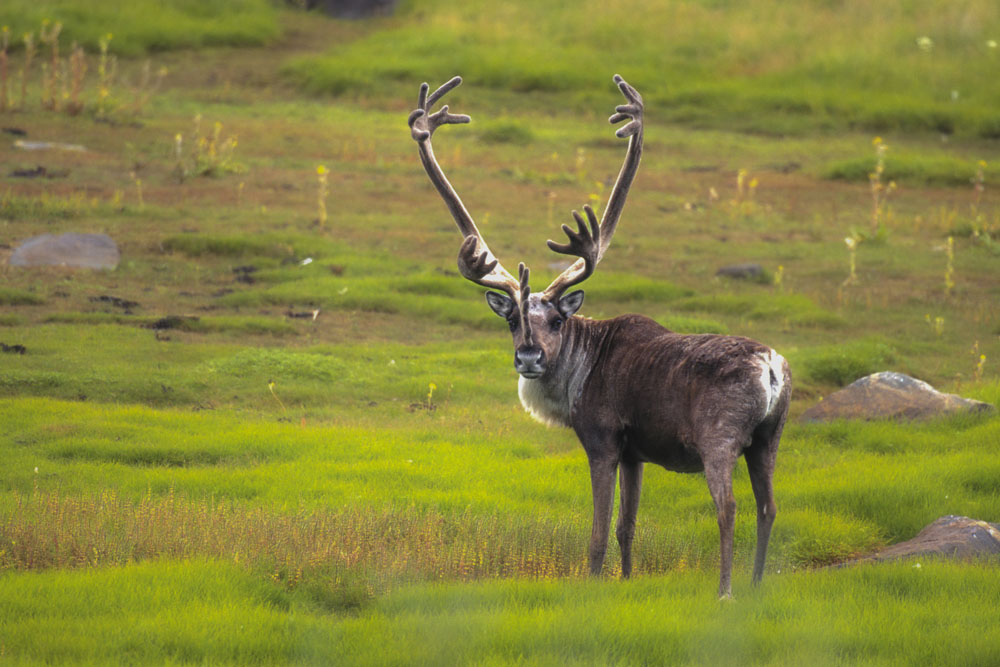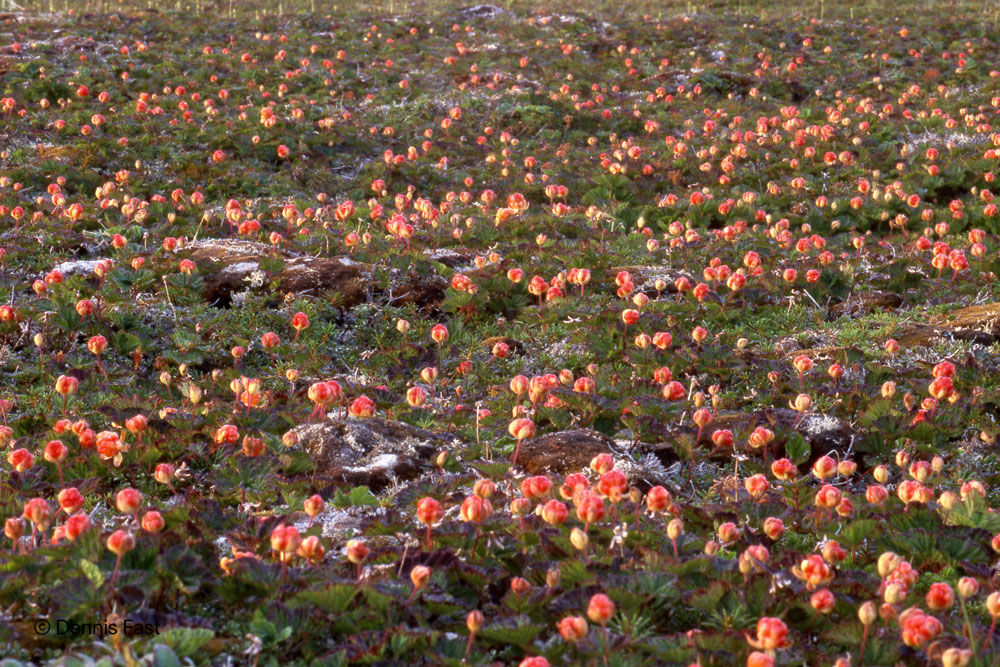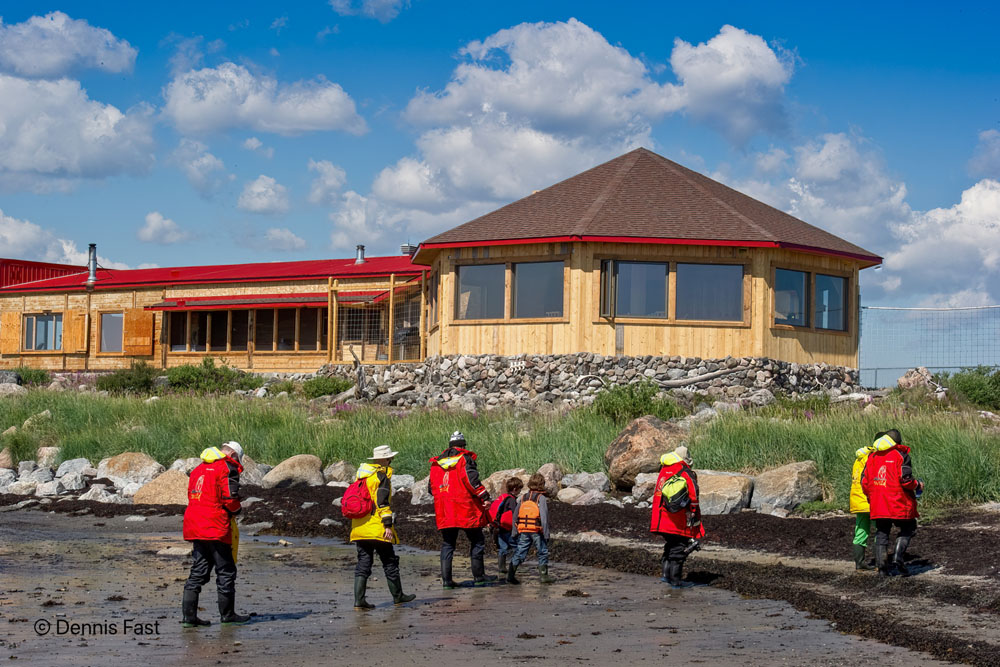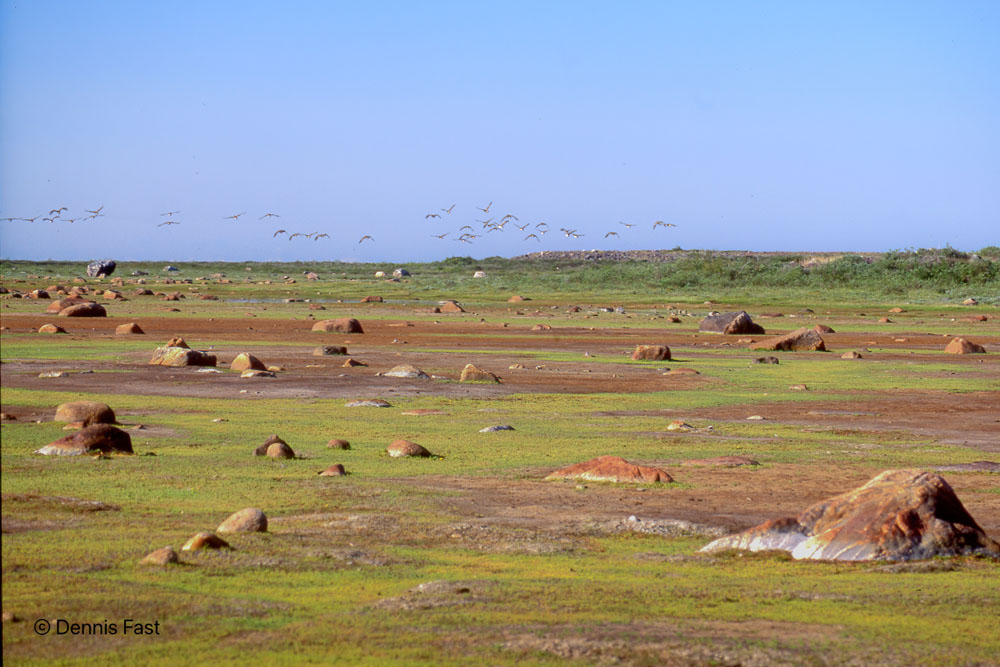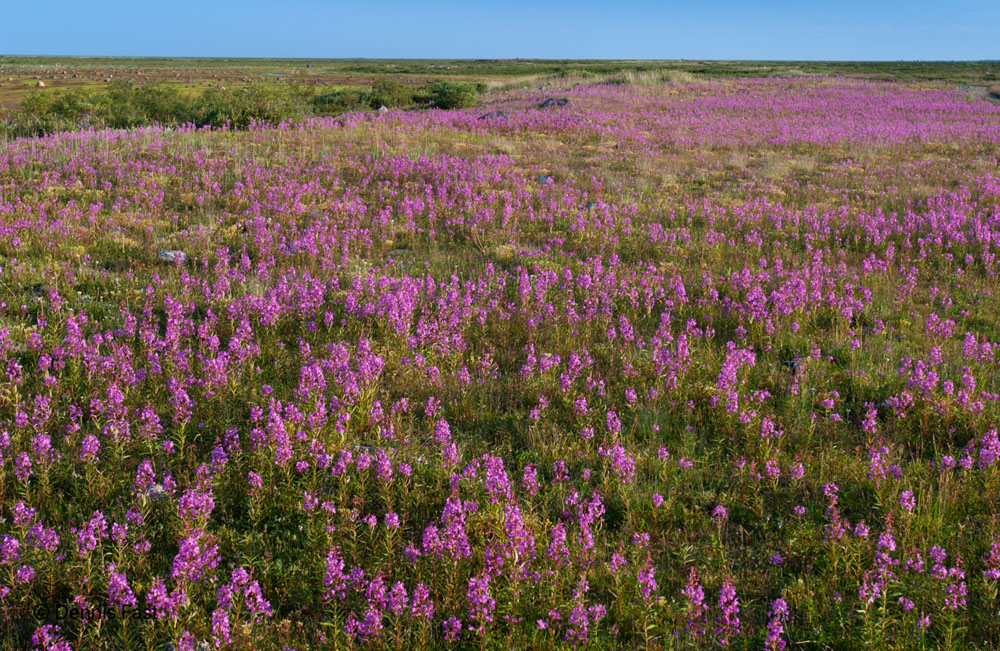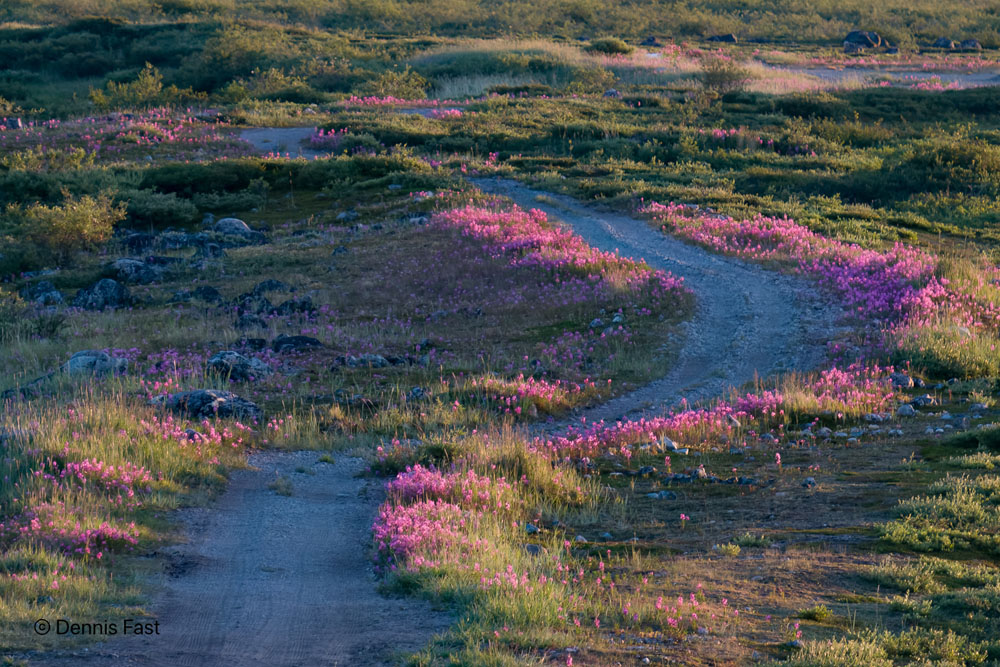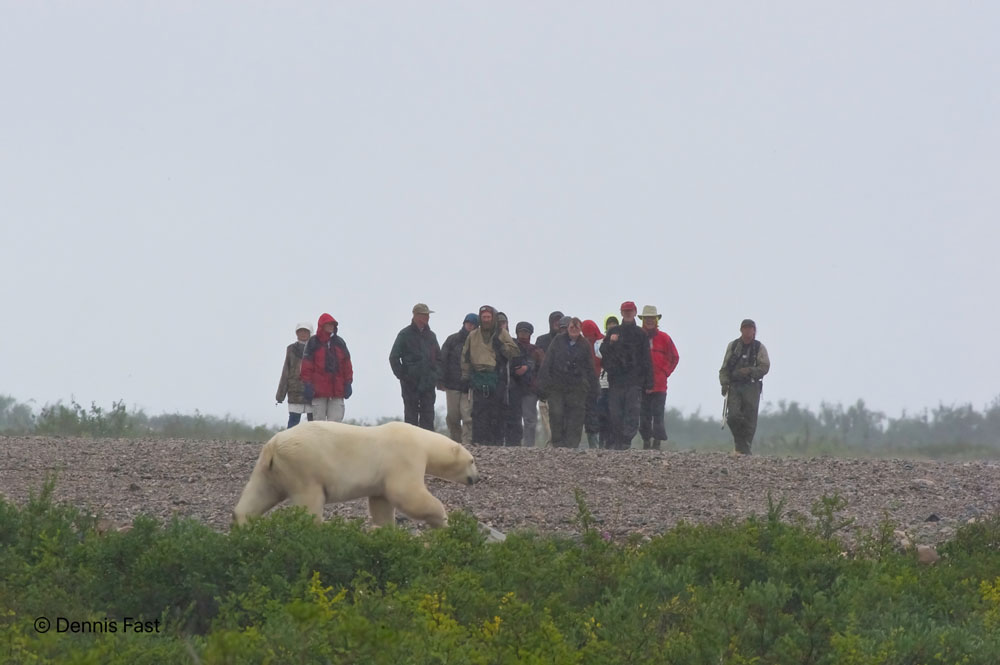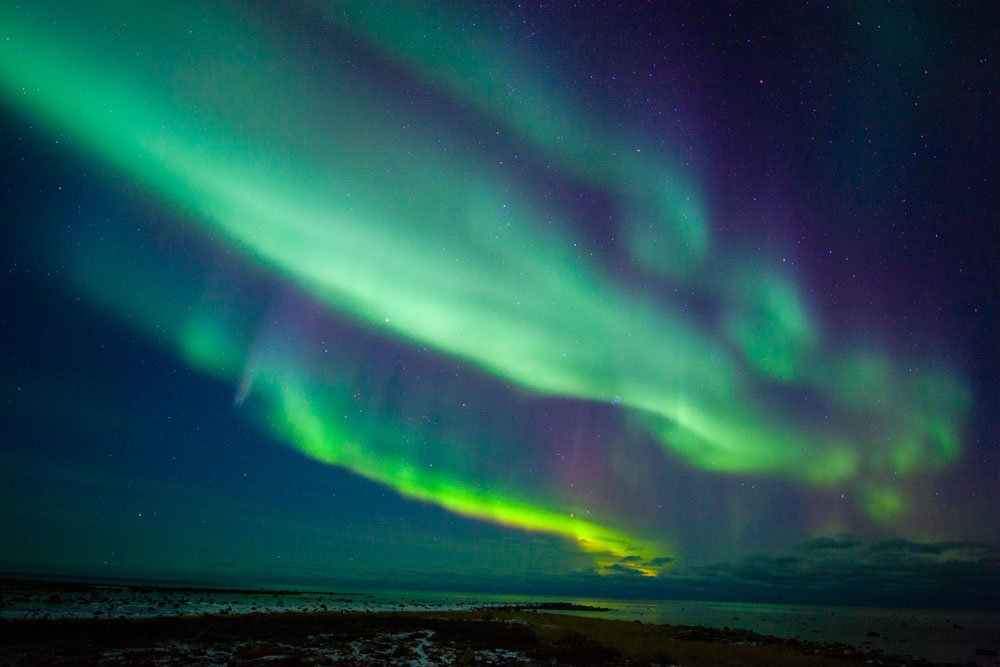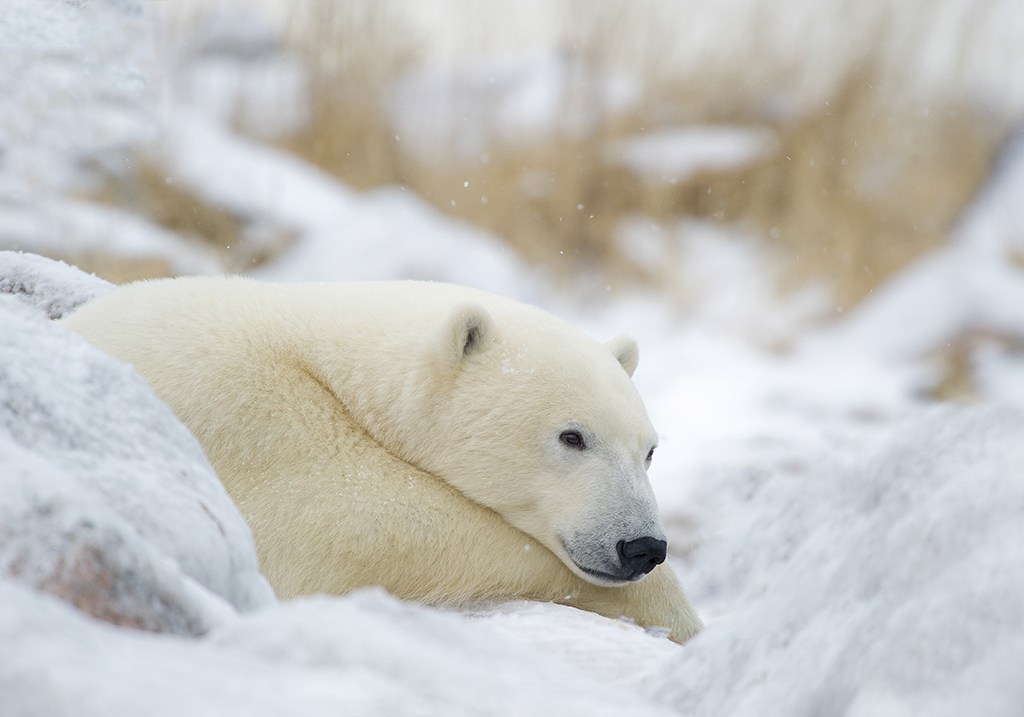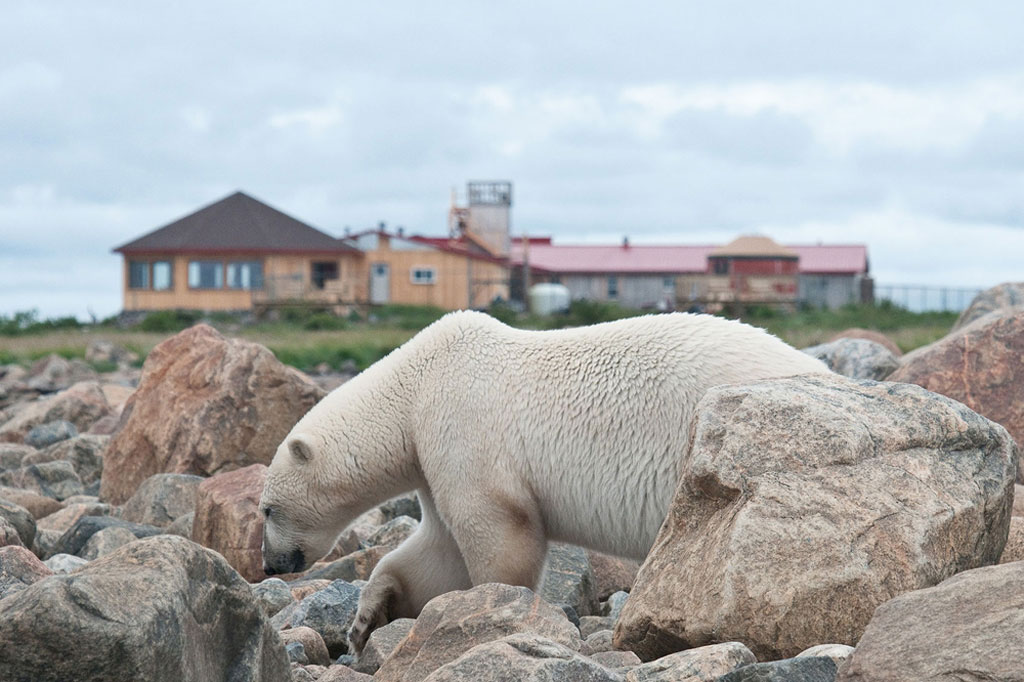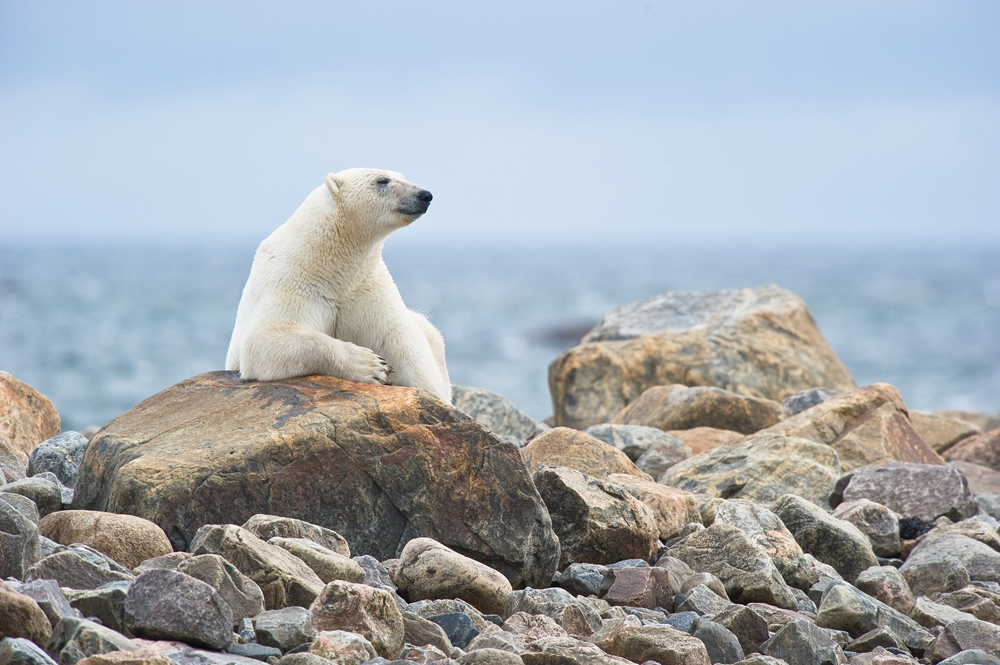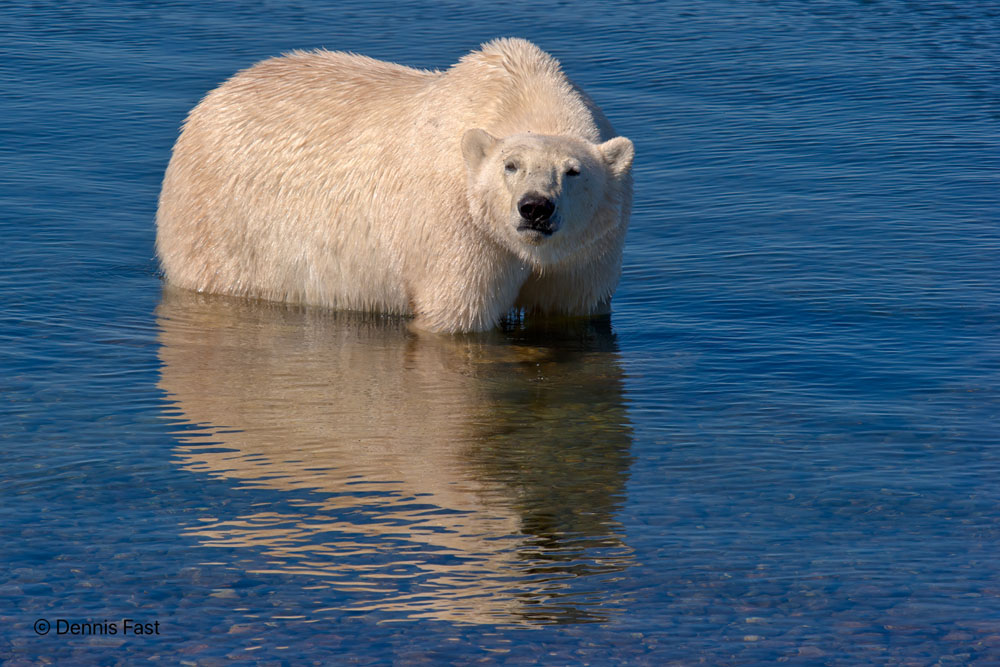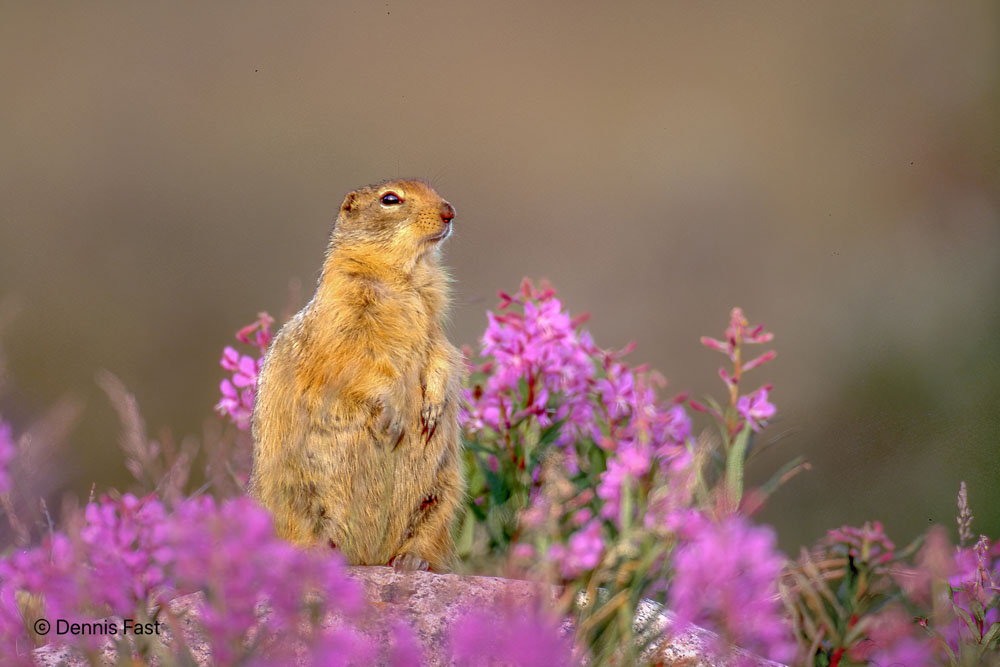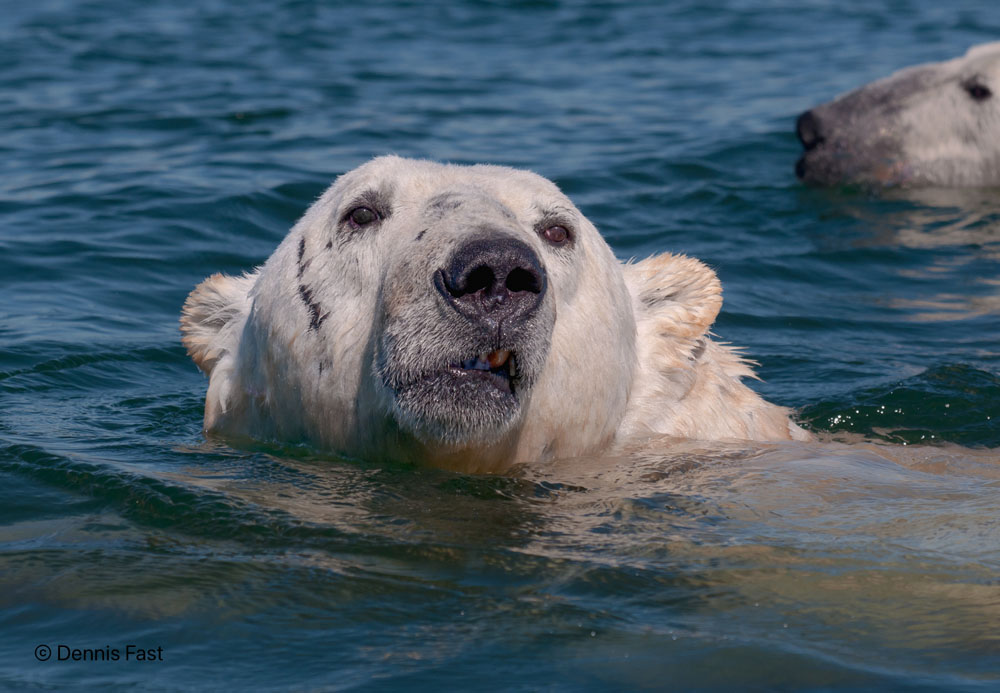We’re kicking off our 31st season of summer polar bear safaris with Birds, Bears & Belugas at Seal River Heritage Lodge on July 6, which makes it the perfect time to have a conversation with Dennis Fast, Churchill Wild’s first Head Guide and Chief Photographer, and the man who helped us start this great adventure on the Hudson Bay coast in 1993.
Our fall polar bear safaris are all but sold out and limited spots remain for the summer safaris that include Birds, Bears & Belugas and the Arctic Safari at Seal River Heritage Lodge, the Arctic Discovery and Hudson Bay Odyssey at Nanuk Polar Bear Lodge, and the Summer Dual Lodge Safari, which offers the best of both ecolodges.
The addition of two specialized Birds, Bears & Belugas departures geared towards photographers from July 16-28 this year makes it an even better time to talk to Fast, who spent much of his time over the years at Seal River Heritage Lodge guiding guests during the summer. The fireweed blooms from late July to early August at Seal River, and if you can catch the bears in the fireweed at just the right time, you’ve got the photo opportunity of a lifetime.
Fast is widely recognized as one of the world’s top polar bear photographers, and he’s been in the right place at the right time on too many occasions to count. Fast’s photo series of polar bears frolicking in fireweed, taken while working at Seal River, was shared around the world when it first appeared on My Modern Met, and it continues to be shared to this day.
Prints from that photo shoot continue to sell, along with numerous others in the Fast collection, a few of which we’ll share here. Most recently, someone ordered a seven-foot wide metal print of Fast’s gorgeous photo of a polar bear lying on its back in the fireweed, while enveloped in an early morning mist.
Memories of Photographing Polar Bears at Ground Level
At Seal River, the distance between you and a polar bear is not measured in yards but in heartbeats.
“You can’t get close at other places,” said Fast. “You’re on a big boat or vehicle and you can maybe get a nice shot of them down below, or on an island, but you don’t get anything close like you would at Seal River Heritage Lodge and the other Churchill Wild lodges.”
Churchill Wild uses a three-guide system now, and guests are extensively briefed before they go out of the lodge compound searching for polar bears, but Fast still remembers the early days at Seal River, and one particular memory stands out.
“On one of our very first groups, we had a lady who wandered off in the flowers,” said Fast. “I told her, ‘You can’t do that,’ because there could be a bear behind any of those willow bushes. She simply looked at me nonchalantly and said, ‘I don’t see any bears.’”
What she didn’t realize — and you might even see this if you visit Seal River — is that polar bears can lie flat as a pancake in a foot of grass. They can also blend in with the willows, the boulders, and the landscape, and appear at any moment.
Fast recalled an unforgettable moment with a polar bear hidden in the landscape. “I remember leading a group along the coast north of the lodge, and I turned around to tell a story. All of a sudden, everyone’s eyes went wide. A big polar bear had been hiding in the willows close by. He got up, looked at us, and walked away slowly. We later found his bed with fur around it where he had been lying. If I hadn’t stopped to tell a story, we would have walked right by him.”
On another occasion there was a bear lying down near the lodge, and Fast decided to have a conversation with him, to see if he could the guests a close up shot.
“I talked to the bear,” said Fast. “I said, ‘Bear, we need you to come over here and cross the road, because there’s fireweed on both sides. You can just walk across the road and then you can go back.’ And within 30 seconds, he started walking, came over, crossed the road right in front of us, turned around, and went back and laid down.”
One of the most dramatic experiences Dennis recounts is about a mother polar bear protecting her cubs.
“I was at Hubbard Point with a mother bear and her two cubs on a small island with a beluga whale kill. And off on the other tip of the island, a hundred yards away was a big male, sleeping. I was scoping and I saw four male bears swimming towards the island, drawn by the smell of the kill. They could smell that kill from miles away.
“Eventually, when they started to get close, the mother just told the cubs to stay. She just exploded into the water and she swam out to meet these four males. Two of them turned and veered off and took off, but two kept swimming. And she charged at one in the water, just swimming with her mouth wide open, and then did the same to the other one.
“And with all that commotion, the big male was getting up at the other end of the island. So mom goes back to the cubs and just taps them to say, come with me, back into the water. Now she’s swimming back at these two guys again with two cubs on her butt. But she managed to convince the bears not to come any closer.
“Then she comes back to the kill. In the meantime, the big guy had disappeared. He had disappeared behind a ridge, and she goes around to meet him. The roaring was like two lions in Africa. Just phenomenal. This is serious, and I think she’s getting killed. And then, all of a sudden, the big male comes walking around the corner, cuts a chunk of beluga whale off and drags it off to his spot again. The next thing you know the mother comes back with the two cubs and takes over the kill.
“I guess she gave him the right to come back and grab something.”
Understanding Polar Bear Behavior
Understanding polar bear behavior is key to capturing their essence. “In general, when bears approach out of curiosity, their heads are up and they often stop and look from side to side, which can also be a sign that they are nervous,” said Fast.
“The very first bear we encountered at Seal River before it was opened came sneaking down the runway behind it. He was out in the open, head slowly going from side to side. Head up is curiosity; head down, ears forward generally means they’re on high alert and tracking.
“Polar bears are highly intelligent. They figure it out pretty quickly. Mature bears know that if they leave us alone, we leave them alone, and they go about their business. Younger bears are more curious and have to be managed differently.”
Fast Polar Bear Photos
Fast is widely recognized as one of the world’s top polar bear photographers, and he’s been in the right place at the right time on too many occasions to count. Fast’s photo series of polar bears frolicking in fireweed, taken while working at Seal River, was shared around the world when it first appeared on My Modern Met, and it continues to be shared to this day. The series showcases not only the playful side of polar bears but also the stunning Arctic landscape in full bloom, creating images that are both breathtaking and endearing.
Prints of Fast’s work are highly sought after. One particularly popular image — a polar bear lying on its back in fireweed enveloped in an early morning mist — was ordered as a seven-foot wide metal print. His images have become iconic representations of the beauty and fragility of the Arctic, making them valuable to both collectors and conservationists.
Fast’s photography is revered not only for its technical excellence but also for its ability to capture the intimate moments and personalities of polar bears. His work has graced the pages of prestigious publications and calendars, including National Geographic, National Wildlife Federation, Audubon, and Inner Reflections, among many others. His unique approach offers a perspective few others can provide.
Dennis’s work is featured in various high-profile platforms. He has contributed to 10 books, including the award-winning bestseller “Pelicans to Polar Bears” and “Wapusk: White Bear of the North.” His “Touch the Arctic,” is a collaborative work with Churchill Wild that features photos from all four seasons at the Churchill Wild lodges. Fast’s photographs are also displayed in the International Polar Bear Conservation Centre at Winnipeg’s Assiniboine Park Zoo and on interpretive signs at the new polar bear exhibit “Journey to Churchill.”
Photographic Advice
For those starting out in wildlife photography, Dennis recommends the Nikon P950. “For wildlife for an amateur photographer, the Nikon P950 is fantastic. It zooms from 24 mm to 2000 mm. It’s built-in, so you never have to change lenses. It has many different settings, and in automatic mode it’s pretty impressive.”
For more advanced photographers, Dennis suggests using zoom lenses. “I promote zoom lenses. In the early days I used the straight lenses, like a 500 mm. I had that at Seal River for years. The problem with those lenses is that once the polar bear gets too close, you can’t change your composition.”
The polar bears can get very close at Seal River Heritage Lodge, and can often be seen hanging around just outside the fenced lodge compound. Close up shots are definitely not out of the question. If the fireweed is in bloom, it provides a phenomenal backdrop for photos, and you might even catch polar bears playing in the bay near the lodge, and if you’re lucky you might even catch the bears hunting beluga whales from the large boulders in the bay when the tide is high.
Patience, Polar Bears and the Perfect Shot
Fast also stressed the importance of patience when trying to get the perfect shot, especially on the polar bear safaris geared towards photographers.
“We had a group of five people and we’re at a couple of sleeping bears, and I knew that eventually they were going to wake up and start wrestling, but the group wanted to move on. Things happen over a length of time. That’s something I’ve always emphasized. The good wildlife photographers know that sometimes you have to wait, because the animals are going to move and we’re going to get the shots we want.
“We had another case when close to the lodge there were a few bears that started to wrestle. I was going to wait, let them get into it. The group wanted to get closer, so we did, but then the bears stopped sparring. We followed them for three miles, and finally, they just did a big circle and came back to the lodge and started wrestling again. So you have to understand polar bear behavior. Sometimes you just have to be patient.”
A Polar Bear Photography Adventure Like No Other
A visit to the Churchill Wild lodges is more than just a photography trip; it’s an opportunity to connect with nature in one of the most pristine environments on Earth. As Fast puts it, “They should expect an adventure like no other. Churchill Wild offers an unparalleled opportunity to see polar bears up close and in their natural habitat.
“The landscape is stunning, with a mix of tundra, mudflats, and wildflowers. Visitors can also see beluga whales, caribou, and sometimes wolves. It’s a place where you can truly connect with nature. And of course, be prepared for the unexpected – every visit brings new and exciting experiences. It’s a place that leaves a lasting impression on everyone who visits.”
Fast continues to be passionate about photography and conservation. “My hope is that my photography raises awareness about the beauty and fragility of the natural world. I want people to see these incredible animals and landscapes and understand the importance of conservation. If my photos can inspire people to care about and protect wildlife, then I feel I’ve done my part. Photography is a powerful tool for storytelling and education, and I’m committed to using it to make a positive impact.”
Now 82 years old, Fast is still actively involved in photography. He’s hoping to film and photograph more polar bears and wolves at Nanuk Polar Bear Lodge in the future. Although he has traveled extensively across Canada, Belize, Costa Rica, Guatemala, Ecuador, Peru, Greenland, Iceland, and the United States in pursuit of the perfect shot, photographing the polar bears of Hudson Bay at eye level will always be one of his favorite experiences.
Fast’s experiences and insights make a compelling case for why the Churchill Wild lodges are must-visit destinations for photographers and nature enthusiasts alike. His stories not only showcase the beauty of the Arctic, but also highlight the importance of preserving these incredible landscapes for future generations. Whether you’re an amateur photographer or a seasoned professional, the opportunity to photograph polar bears with Churchill Wild is an experience that will stay with you forever.
“There’s nothing else like it anywhere in the world,” said Fast. When you’re on the ground and a polar bear gets close to you, it’s always exciting. You’re on their terms. And the shots are that much more intimate.
“It’s a thrilling experience.”

